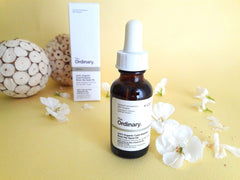Meet the ultimate skincare multitasker… If you’re looking for a single natural but effective ingredient to target your skincare woes, it’s time to incorporate rosehip oil into your routine. Renowned for its ability to heal and regenerate, if you have fine lines, sun damage, acne scars, dry skin, or adult acne, rosehip oil may just be your new beauty BFF.
WHAT IS ROSEHIP OIL?
Rosehip oil is a plant oil extracted from the seeds of the fruit that is left behind after a rose has bloomed. It’s a popular ingredient in skincare because it can benefit multiple different skin types and concerns – it’s as beneficial to oily skin as it is to dry skin, and is well-known for its ability to fade pigmentation and heal scars (it’s even used in hospitals to help treat burn victims).
HOW DOES IT WORK?
Rosehip oil is a powerhouse of hardworking skincare favourites which help to treat signs of aging and pigmentation, hydrate skin, and repair damage and scars.
Betacarotene – This converts into Vitamin A to help boost the skin’s natural healing process, prevent free radical damage, and improve skin tone, texture, and pigmentation.
Vitamin C – Counteracts the damage caused by too much sun exposure and improves collagen production
Vitamin E – This anti-inflammatory antioxidant calms and nourishes dry and sensitive skin.
Fatty acids (omegas 3, 6, 9) – These repair and regenerate damaged skin to reduce the appearance of scarring and damage.
WHY SHOULD I USE IT?
Rosehip oil is incredibly versatile and can be used in a number of different ways. You can use it for a face massage, leave on overnight for a hydrating treatment, and drop it into your moisturiser to boost its hydrating properties. Unlike most oils, you can also use rosehip oil under makeup. It has a thin, ‘dry’ texture which feels less slick and greasy so absorbs without disturbing foundation. Because it’s free from fragrances, preservatives, and added chemicals, you can use rosehip oil daily, even if you have sensitive skin.

THE ORDINARY 100% ORGANIC ROSE HIP SEED OIL
This is 100% pure rosehip seed oil created through the process of cold-pressing (which preserves the quality of the vitamins in the oil). It’s also the best example of an oil that can be mixed in with or worn under foundation without causing issues. Its thin, dry texture absorbs fast and doesn’t leave a greasy film.




















